
The Sheremetyevo Palace (or the Sheremetyevo Palace) is the former estate of the Counts of Sheremetyevo and one of the palaces of St. Petersburg.
The palace is located on the banks of the Fontanka River and is also called the "Fountain House".
Today, the palace houses the Museum of Music, which includes a restored suite of state halls of the palace and an exhibition of musical instruments. In one of the wings of the palace there is a museum of Anna Akhmatova in the Fountain House.
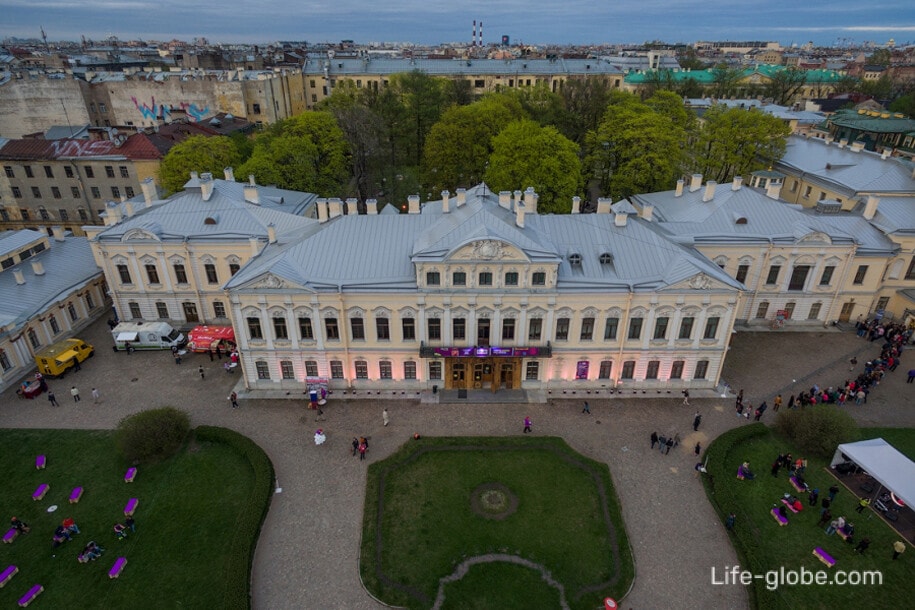
The Sheremetyevo Palace is almost the same age as the city, its history dates back to 1712, when a plot of land along the Fontanka River was granted by Peter I to Field Marshal Count Boris Petrovich Sheremetev for the construction of a manor.
At first, wooden buildings were erected on the site, and then stone buildings with a garden, which are the country estate of the Sheremetevs.
In the late 1730s and early 1740s, a new one - story palace was built for the son of Boris Petrovich Sheremetev-Pyotr Sheremetyevo on the site of the old wooden buildings under the direction of architect G. D. Dmitriev.
In the early 1750s, according to the project of Savva Ivanovich Chevakinsky and with the participation of the fortress architect Fyodor Semyonovich Argunov, the building was built on the second floor and expanded. The two-story palace received the style of Russian Baroque.
Subsequently, the estate grew: outbuildings and courtyard buildings were erected. The interior of the courtyard was also changed.
The most famous architects of different eras participated in the creation of the interiors of the palace and manor buildings for several centuries: F. S. Argunov, I. D. Starov, A. N. Voronikhin, D. Quarenghi, H. Meyer, D. Quadri, I. D. Corsini, N. L. Benois, A. K. Serebryakov and others.
So, the Sheremetyevo Palace and the estate belonged to five generations of the Sheremetyevo family.
Under the Counts of Sheremetyevo, the Fountain House was one of the high-society centers of St. Petersburg, a meeting place for outstanding musicians, cultural and scientific figures; and the Sheremetyevo Choir Chapel, created to accompany services in the Fountain House house Church, was well known not only in Russia, but also in Europe. The palace was practically a museum of the history of the Sheremetev family, which for many centuries played an important role in the Russian state.
After the revolution of 1917, the palace opened a Museum of noble life and the life of serfs of the XVIII-XX centuries, which existed until 1931. By 1928, the palace housed the Astronomical Institute, then-research institutions. In 1989, part of the premises of the Sheremetyevo Palace was transferred to the Museum of Theatrical and Musical Art, and restoration work began in the palace to recreate the historical interiors of the 18th and 19th centuries.
Since 1990, the Sheremetyevo Palace has been one of the branches of the St. Petersburg State Museum of Theater and Musical Art. Within the walls of the palace there is a Museum of Music.
Today, the palace can be visited.
The architectural complex of the palace and its adjacent wings is one of the oldest architectural ensembles of St. Petersburg, which has preserved its original appearance.
The palace building stands at the back of the main courtyard, opened towards the Fontanka River embankment, from which it is separated by a cast-iron openwork fence with a gate, originally made in 1837-1838 by the military engineer I. D. Corsini. The gate of the fence is decorated with the coat of arms of the Counts of Sheremetyevo.
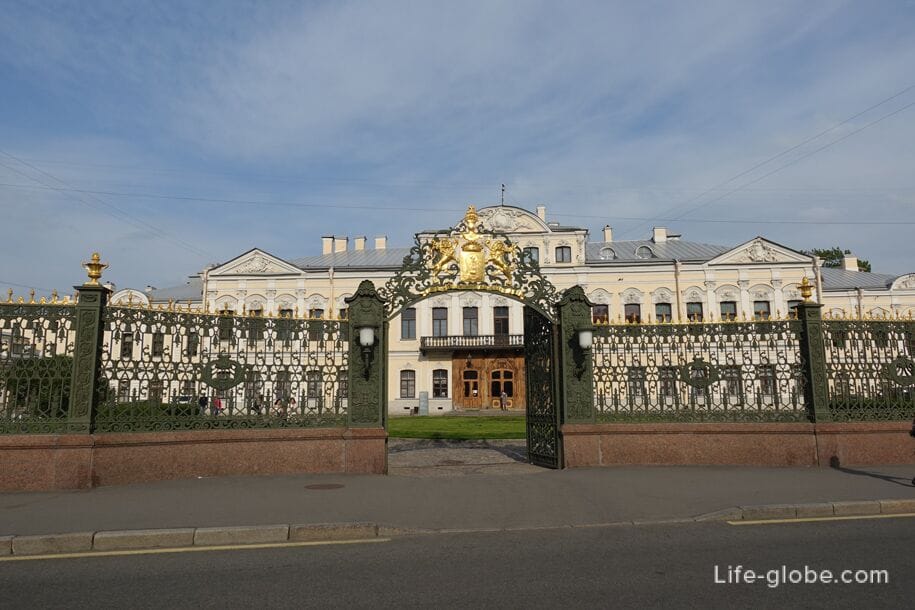
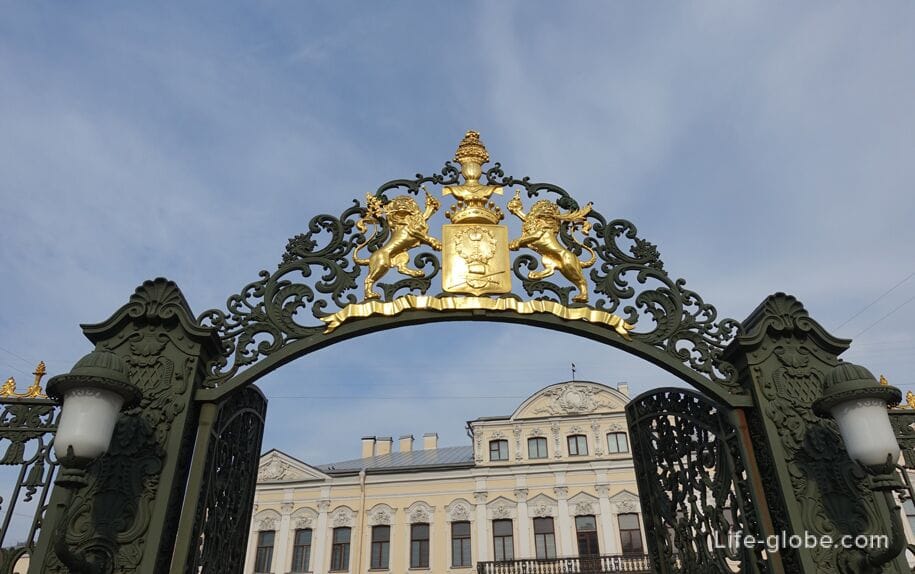

The center of the main facade of the Sheremetyevo Palace is distinguished by pilasters and a mezzanine, completed with a bow pediment, which houses a cartouche with the Sheremetyevo coat of arms.
The palace wings are adjacent to the central building of the palace.
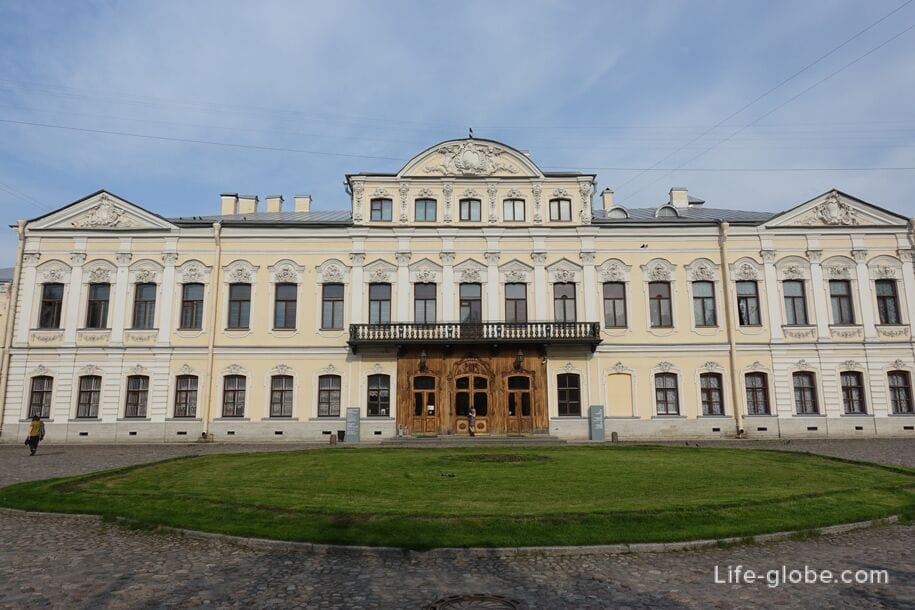
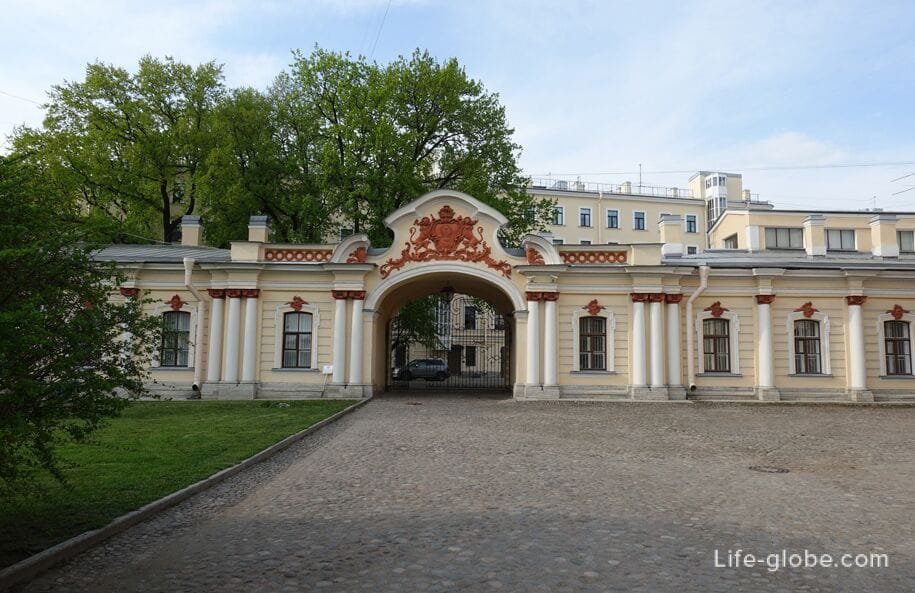
Today, within the walls of the palace, you can visit the permanent expositions of the Music Museum: the exposition "suite of state halls" (2nd floor of the palace) and the exposition of musical instruments "open museum funds" (1st floor of the palace).
The museum's collection is based on Russia's largest collection of musical instruments from all over the world, which includes more than three thousand instruments. Russian Russian Russian Music Collection includes instruments created by famous Western European and Russian masters of the 16th and 20th centuries; memorial instruments of composers of the Russian school of the 19th and 20th centuries; collections belonging to the Romanov imperial family; a unique Russian horn orchestra and musical instruments from all continents of the world. Among the exhibits: a violin that belonged to M. I. Glinka, a collection of flutes of Alexander I, a cello of Nicholas II by master A. Jaco, a quartet of cornet pieces that belonged to Emperor Alexander III, a violin by the Italian master Francesco Stradivari, oliphants donated by Empress Alexandra Feodorovna to Emperor Nicholas I, grand pianos by A. G. Rubinstein and D. D. Shostakovich.
Also in the palace you can see the restored enfilade of the main halls of the second floor with the items of the Sheremetyevo collections, as well as works of painting and decorative and applied art of the 1819 centuries.
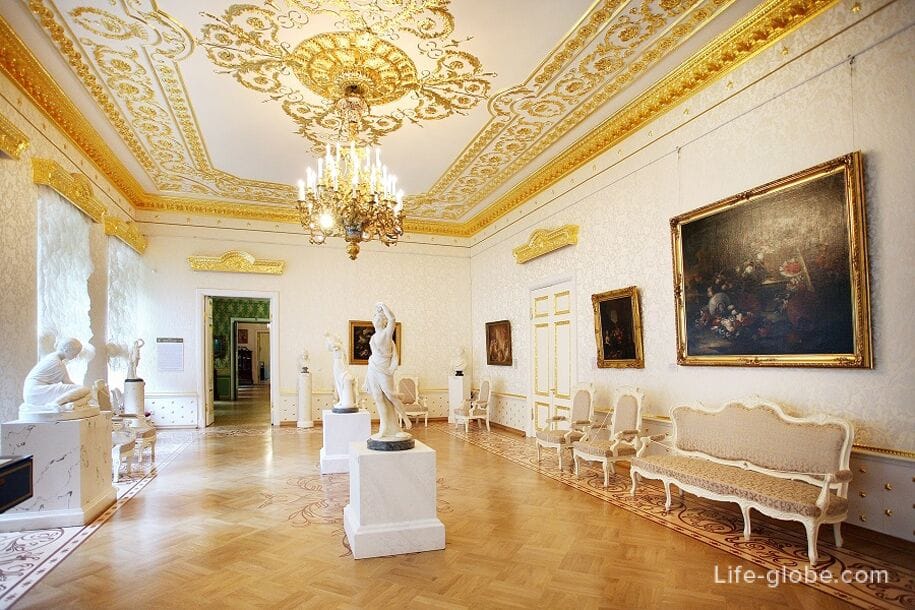

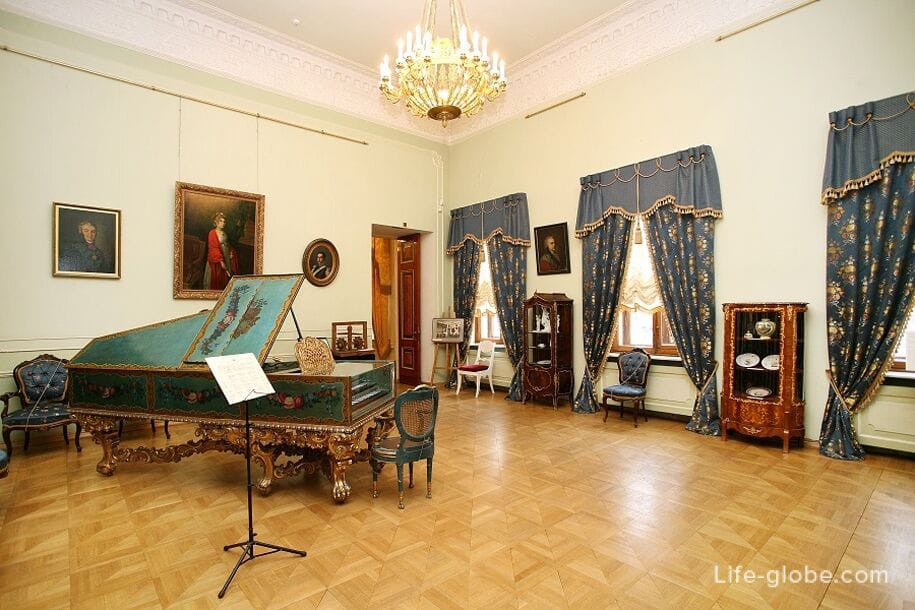
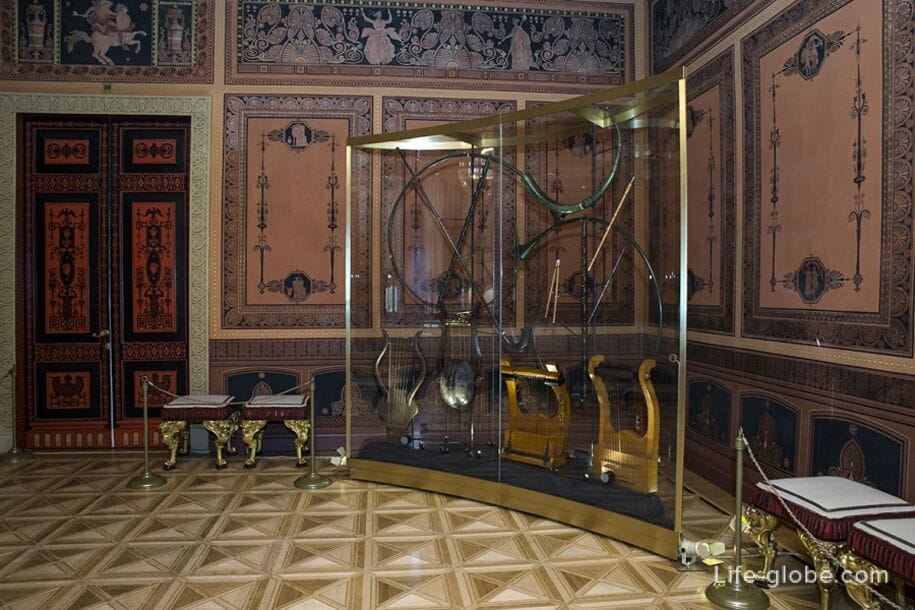
In addition, to visit the Palace state rooms and the open funds of the Museum, as well as, the front garden of the Palace, the Governor's outhouse, stable, Hospital, Song and wings, get acquainted with the everyday life of serfs and servants who lived in the agricultural part of the estate, and learn the history of the building, which now houses the"theatre of the Foundry", you can be one of the excursions undertaken by the ensemble of the Sheremetyev Palace.
The palace also hosts concerts, exhibitions, lectures, seminars, festivals and other events.
Classical music concerts are held in the White Hall of the palace.
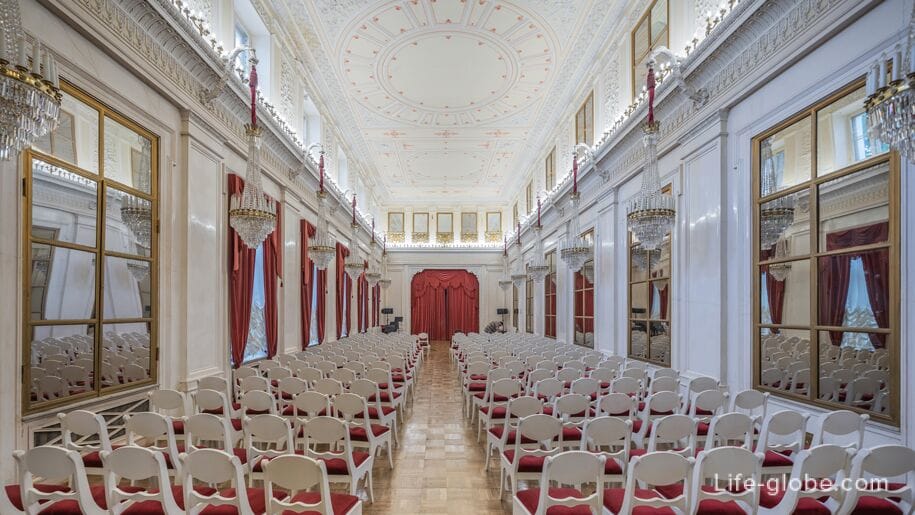
Entrance to the palace and on excursions is paid.
The Sheremetyevo Palace is a part of the St. Petersburg State Museum of Theatrical and Musical Art.
All information about the exhibitions, opening hours of the museum, the purchase and cost of tickets, excursions, as well as the poster of concerts and other events in the palace, we recommend that you check on the official website of the museum: theatremuseum.
For more than 30 years (until 1952), the Russian poet of the Silver Age Anna Andreyevna Akhmatova lived in the garden wing of the palace complex.
In 1989, on the occasion of the 100th anniversary of the poet's birth, the Literary and Memorial Museum of A. A. Akhmatova was opened in the southern garden wing of the Sheremetyevo Palace.
The museum still functions today under the name Anna Akhmatova Museum in the Fountain House, where you can visit the memorial apartment of the Punins-Akhmatova with the appearance of the 1920s-1940s of the 20th century, and the literary and historical exposition located next to the apartment space.
The museum recreates: the staircase, the entrance hall, the kitchen-corridor, the office of Punin (Anna's third husband), the dining room, the room of Anna Akhmatova in 1940, the room of Anna Akhmatova in 1945, the White Hall with a literary exhibition and the exhibition "The American Cabinet of Joseph Brodsky".
The Anna Akhmatova Museum is located at34 Fontanka River Embankment. The entrance to the museum is from Liteyny Avenue, through the arch of house 53.
Entrance to the museum is paid. Tickets can be purchased at the ticket office or in advance-online on the museum's website. Read more about the Anna Akhmatova Museum...
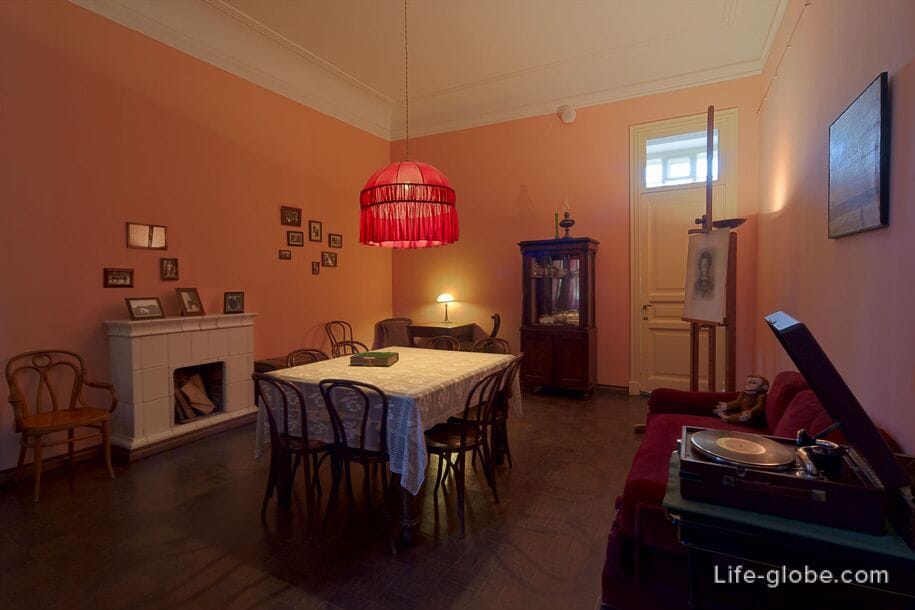
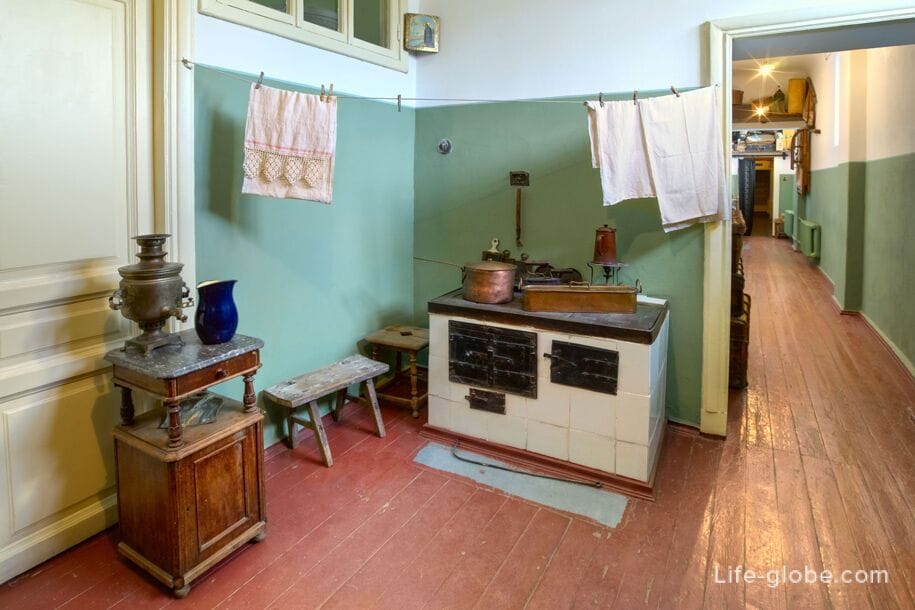
Sheremetyevo Palace is located in the historical center of St. Petersburg, at the address: Fontanka River Embankment, 34.
Coordinates of the Sheremetyevo Palace: 59°56'07.0"N 30°20'44.0"E (59.935278, 30.345556).
Nearest metro stations: "Mayakovskaya", "Ploshchad Vosstaniya", "Gostiny Dvor" and "Nevsky Prospekt".
You can also see and visit the Sheremetyevo Palace with one of the excursions
All accommodation facilities in St. Petersburg, including in the city center and more remote from it, can be viewed and booked here